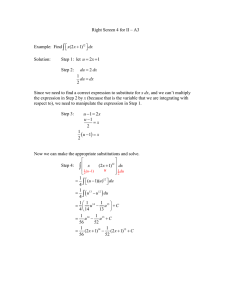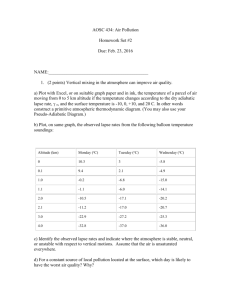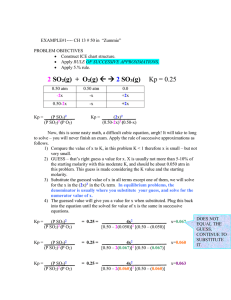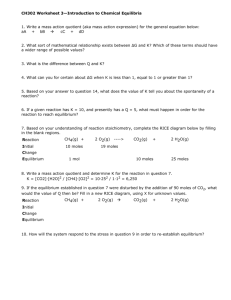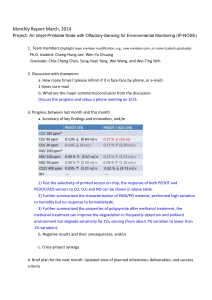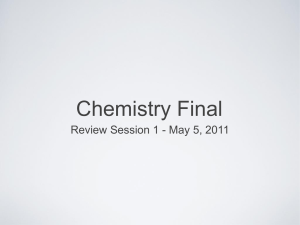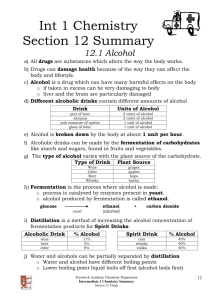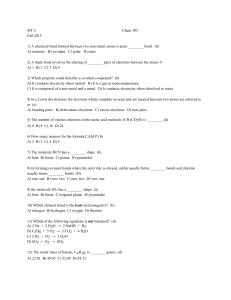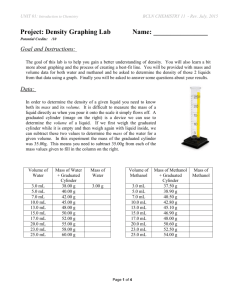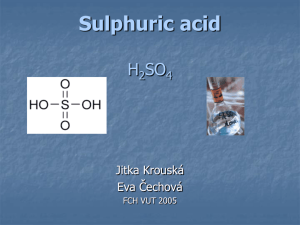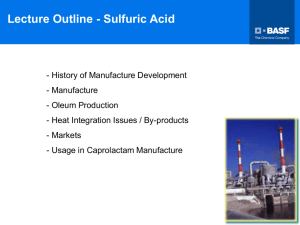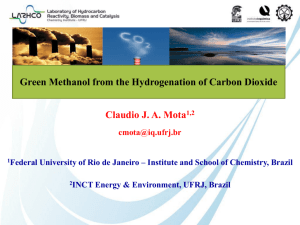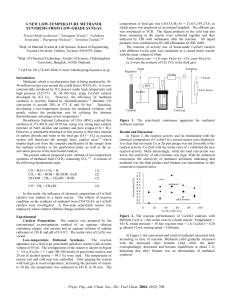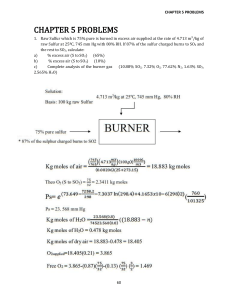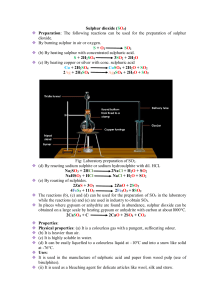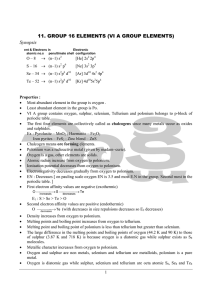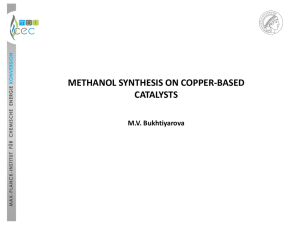Science 1 Small-Group Tutorial Scheme
advertisement
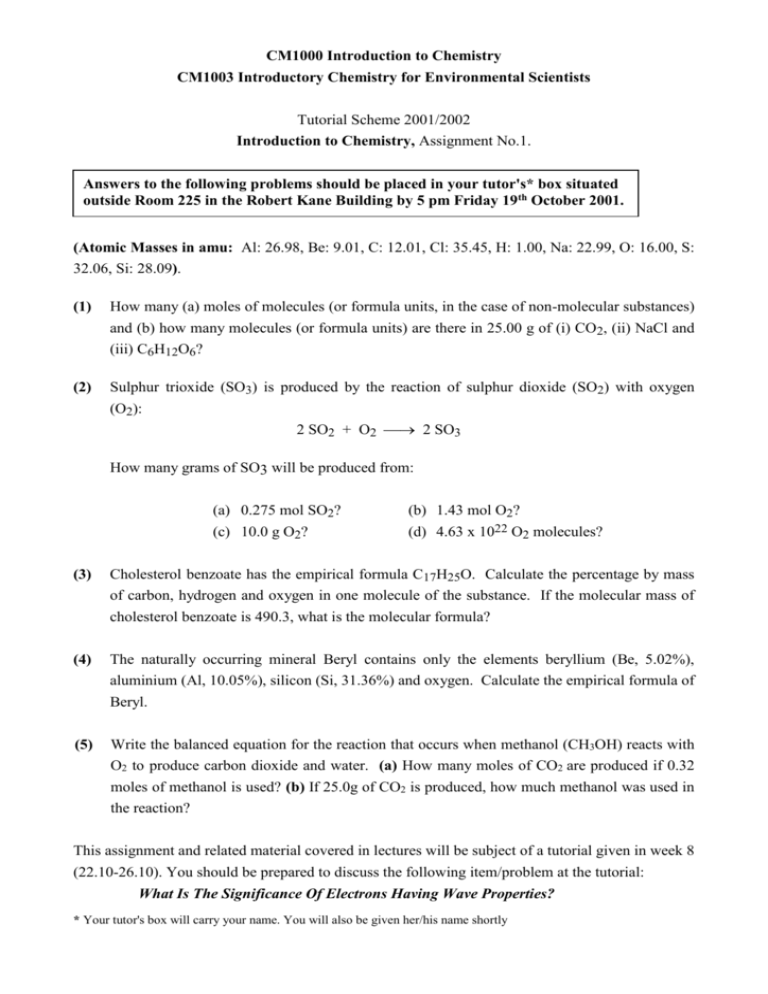
CM1000 Introduction to Chemistry CM1003 Introductory Chemistry for Environmental Scientists Tutorial Scheme 2001/2002 Introduction to Chemistry, Assignment No.1. Answers to the following problems should be placed in your tutor's* box situated outside Room 225 in the Robert Kane Building by 5 pm Friday 19th October 2001. (Atomic Masses in amu: Al: 26.98, Be: 9.01, C: 12.01, Cl: 35.45, H: 1.00, Na: 22.99, O: 16.00, S: 32.06, Si: 28.09). (1) How many (a) moles of molecules (or formula units, in the case of non-molecular substances) and (b) how many molecules (or formula units) are there in 25.00 g of (i) CO2, (ii) NaCl and (iii) C6H12O6? (2) Sulphur trioxide (SO3) is produced by the reaction of sulphur dioxide (SO2) with oxygen (O2): 2 SO2 + O2 2 SO3 How many grams of SO3 will be produced from: (a) 0.275 mol SO2? (c) 10.0 g O2? (b) 1.43 mol O2? (d) 4.63 x 1022 O2 molecules? (3) Cholesterol benzoate has the empirical formula C17H25O. Calculate the percentage by mass of carbon, hydrogen and oxygen in one molecule of the substance. If the molecular mass of cholesterol benzoate is 490.3, what is the molecular formula? (4) The naturally occurring mineral Beryl contains only the elements beryllium (Be, 5.02%), aluminium (Al, 10.05%), silicon (Si, 31.36%) and oxygen. Calculate the empirical formula of Beryl. (5) Write the balanced equation for the reaction that occurs when methanol (CH3OH) reacts with O2 to produce carbon dioxide and water. (a) How many moles of CO2 are produced if 0.32 moles of methanol is used? (b) If 25.0g of CO2 is produced, how much methanol was used in the reaction? This assignment and related material covered in lectures will be subject of a tutorial given in week 8 (22.10-26.10). You should be prepared to discuss the following item/problem at the tutorial: What Is The Significance Of Electrons Having Wave Properties? * Your tutor's box will carry your name. You will also be given her/his name shortly
